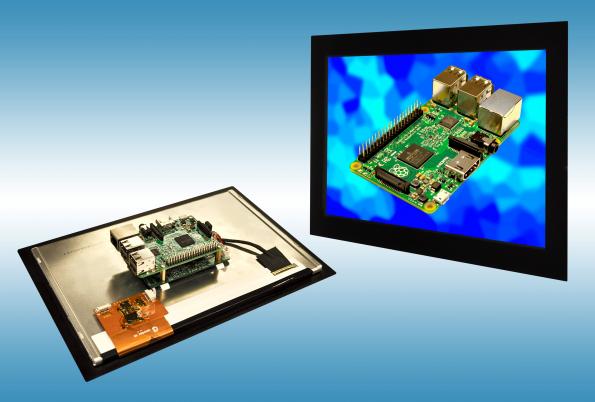Inelco Hunter, who designed and continues to supply the current 7 inch official Raspberry Pi screen, has developed a new 10.1 inch kit for customers looking to create a larger screen format solution running from a Raspberry Pi, or to upgrade from the official 7 inch display format for applications requiring extra screen space. Applications for the new PCAP Touch Screen Kit include industrial automation, machine tool control systems, medical devices, home technology, IoT products, communication systems, payment terminals, etc.
The new kit allows users to easily industrialize their equipment by adding the larger screen, yet still maintaining the software and programs already developed for the current 7 inch version.
“This cost-effective, pre-assembled display Kit will realize the potential of the Raspberry Pi, turning it into a complete system with minimal effort, providing huge time-savings by speeding up installation and slashing development time”, the company said.
The kit comes pre-assembled to take the Raspberry Pi which is simply mounted onto the rear of the interface PCB using the supplied pillars and screws. The display can be either panel or flush mounted and provides a resolution up to WXGA.
Connection is via an onboard HDMI interface PCB which provides all power, signal and backlight conversion for the TFT display. The Kit requires 12V at 2A to drive the TFT display, touch panel and backlight, and 5V at 2A to power the Pi.
Features include a multi-touch input PCAP touch screen offering pinch, zoom and rotate, which can be either USB or I2C connected if preferred, a wide view angle IPS display and a resolution of 1280 x 800 pixels.
The screen dimensions are 255mm x 174mm x 9mm (including the touch panel) with a view area of 218mm x 137mm.
The kit can work with all models of the Raspberry Pi. It offers reliability and has been tested to temperatures of +70 degrees C and offers an MTBF of 50,000+ hours.
The kit includes: a 10.1 inch Touch Screen display; an HDMI to LVDS interface PCB (pre-assembled); an HDMI to HDMI interface connector; a Micro USB to USB interface cable; plus the screws and pillars to mount the Raspberry Pi.
For more information, click here.












